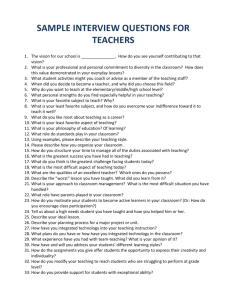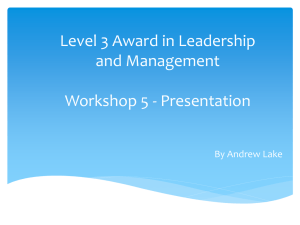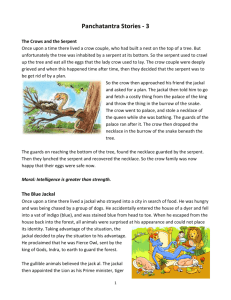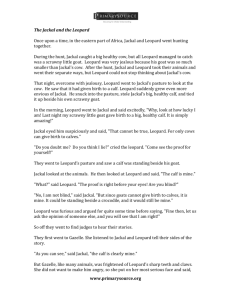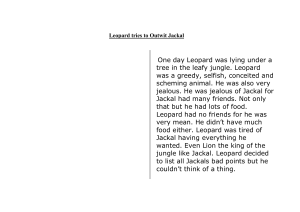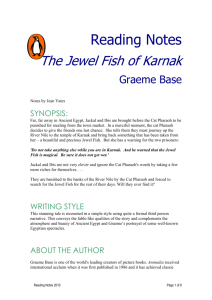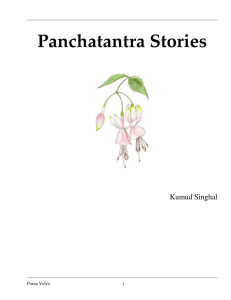Student handout 6: The Jackal - Civics and Citizenship Education
advertisement
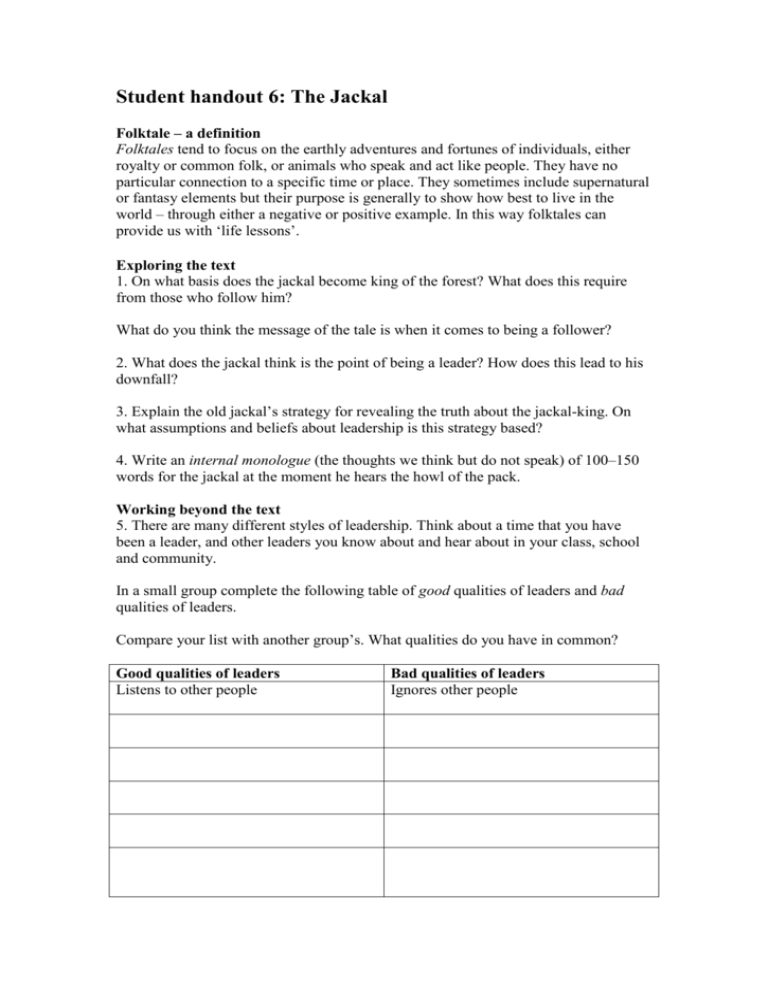
Student handout 6: The Jackal Folktale – a definition Folktales tend to focus on the earthly adventures and fortunes of individuals, either royalty or common folk, or animals who speak and act like people. They have no particular connection to a specific time or place. They sometimes include supernatural or fantasy elements but their purpose is generally to show how best to live in the world – through either a negative or positive example. In this way folktales can provide us with ‘life lessons’. Exploring the text 1. On what basis does the jackal become king of the forest? What does this require from those who follow him? What do you think the message of the tale is when it comes to being a follower? 2. What does the jackal think is the point of being a leader? How does this lead to his downfall? 3. Explain the old jackal’s strategy for revealing the truth about the jackal-king. On what assumptions and beliefs about leadership is this strategy based? 4. Write an internal monologue (the thoughts we think but do not speak) of 100–150 words for the jackal at the moment he hears the howl of the pack. Working beyond the text 5. There are many different styles of leadership. Think about a time that you have been a leader, and other leaders you know about and hear about in your class, school and community. In a small group complete the following table of good qualities of leaders and bad qualities of leaders. Compare your list with another group’s. What qualities do you have in common? Good qualities of leaders Listens to other people Bad qualities of leaders Ignores other people 6. Using a dictionary, find the definition for each of the styles listed below, then write a definition in your own words. Leadership style autocratic Definition authoritarian democratic tyrannical dictatorial Can you think of other styles? Add them to your table. 7. You have been given the task of explaining these styles of leadership to Grade 3 students at the local primary school. You have been asked to do this by creating a series of cartoon-style pictures. Draw your cartoon representations of these different types of leadership. 8. Below are a number of quotes about leadership. As a class discuss what you think each of these people is saying about the nature of leadership. What values are implied about good leadership? I must follow the people. Am I not their leader? (Benjamin Disraeli, from http://en.thinkexist.com) To lead people, walk beside them … As for the best leaders, the people do not notice their existence. The next best, the people honor and praise. The next, the people fear; and the next, the people hate … When the best leader’s work is done the people say, ‘We did it ourselves!’ (Lao-tsu, from http://www.brainyquote.com) Speak softly and carry a big stick; you will go far. (Theodore Roosevelt, from http://www.brainyquote.com) Leadership is the art of getting someone else to do something you want done because he wants to do it. (Dwight Eisenhower, from http://en.thinkexist.com) How fortunate for leaders that men do not think. (Adolf Hitler, from http://en.thinkexist.com) • Use the Internet or other resources in your library to find three quotes by famous people that reflect your ideas about leadership. • Write your quotes out on strips of coloured paper and display them on a pinboard in your classroom. 9. Styles of leadership Think about styles of leadership that are needed in particular situations. For example, a leader in the army may need a different style from a democratic leader. Complete the table below. Context Family Leadership style School Club Nation As a whole class discuss your answers. Does any pattern emerge from your responses? 10. Australian leaders This research task will need to be undertaken in the library. Choose two Australian leaders – one from the present and one from the past. These could be political leaders, sports leaders or leaders of particular groups (for example, Weary Dunlop, Robert Menzies or Charles Perkins). Find the following information about your leader: • a brief career/leadership biography – this could be presented in the form of a timeline • key leadership qualities • three noteworthy achievements • what others have said about this person as a leader. Present your information on a poster or present it orally using visual aids. 11. Write your own modern-day folktale of 300–500 words that shows what you believe is the most important thing about leadership.


